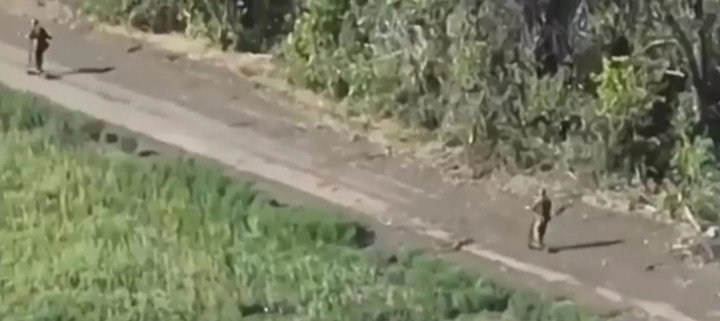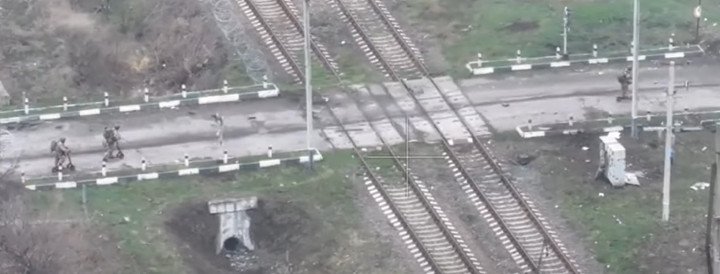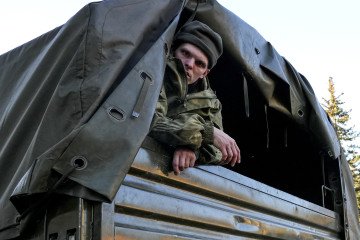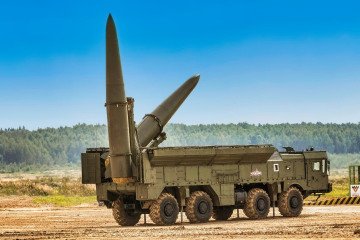Russia was once feared as a military powerhouse. Three years into its war on Ukraine, that myth has shattered—but its ruthless disregard for human life keeps the danger high.

Ukraine has systematically dismantled Russia’s stockpile of modern weapons, largely with modified FPV drones. Yet, Russia pushes forward with “meat wave” assaults, using everything from precision missiles to donkeys. Dirt bikes and scooters now share the battlefield, proving Russia will sacrifice anything—technology, animals, or its own human lives—to keep advancing. This isn’t desperation; it’s doctrine. And history shows Russia will use whatever it takes to achieve its goals.
The total number of servicemen in the Russian Armed Forces is 2.38 million of which 1.5 million are on active duty. This makes it the second-largest army in the world by size. Russia’s recruitment success mainly comes from lucrative military contracts that offer approximately $38,000 a year, around 15 times more than the Russian minimum wage.
A large portion of these contract soldiers, along with their mobilized counterparts, will be sent on full-frontal assaults against entrenched Ukrainian positions. With a high density of modified drones—both reconnaissance and combat—armored vehicles become immediate targets and often can’t reach the frontline.
Russian forces have had to improvise to preserve their remaining armor while sustaining the offensive. As a result, it's now common to see soldiers charging into battle on two-wheeled or even four-legged transports.
As absurd as it looks, the sheer size of Russia’s forces shouldn’t be underestimated. History has shown that brute force and mass waves played a decisive role in Russia’s victory over the Nazis, and old doctrine dies hard.
Dirt bikes, mopeds, and sidecars
With armored convoys becoming easy prey for Ukrainian drones, Russian forces have resorted to dirt bikes, mopeds, and even vintage motorcycles with sidecars to keep moving. Dirt bikes offer speed and agility, letting troops weave through trenches and forests much faster than on foot, but at the cost of zero protection.
Temu Army: Russian soldiers are now motorized on scooters. pic.twitter.com/d17zFejiMf
— Clash Report (@clashreport) November 4, 2024
Ukrainian drone operators have turned them into moving bullseyes, dropping grenades on exposed riders like a twisted arcade game. Mopeds, meanwhile, are the battlefield’s biggest punchline—slow, fragile, and barely more useful than walking. Their presence is less about strategy and more about Russia’s deepening vehicle shortages.
Then there’s the motorcycle with a sidecar, a relic of World War II that somehow found its way back into modern war. While the Germans once mounted MG42s on them for mobile fire support, today’s Russian troops are just hoping the third wheel doesn’t fall off before they reach the front.
Electric scooters
At first glance, electric scooters seem like the last thing to be used on a battlefield, yet Russian soldiers have been spotted using them in urban combat zones like Bakhmut and Avdiivka.
Their biggest advantage is their silence, which allows troops to reposition at night without the loud engines of dirt bikes or buggies giving them away. In the trench warfare of World War I, soldiers experimented with bicycles and even roller skates to cross fortified areas quickly. While electric scooters are more of an improvisation than a tactical innovation, the concept remains the same.
Still, they are fragile, have a limited battery life, and are practically useless in Ukraine’s muddy fields, making them more of a gimmick than a serious battlefield asset.


Buggies
Military buggies, widely used in conflicts from Iraq to Syria, have found their way to the Ukrainian battlefield. Russian units, particularly reconnaissance teams and mobile assault groups, have been spotted using them in Zaporizhzhia and Kherson, where the need for speed and agility outweighs the need for armor.
Unlike traditional armored personnel carriers, buggies are fast and can maneuver through terrain that is impassable for heavier vehicles. In Iraq and Afghanistan, US special forces used similar vehicles for high-speed raids, while ISIS fighters favored civilian dune buggies as makeshift technicals.
I can’t even believe I’m writing this:
— Rocke Fella - NAFO Raccoon △ (@NAFORaccoon) July 14, 2024
russian assault in the Kupyansk direction repelled, 5 golf carts eliminated 🤦♂️ pic.twitter.com/XhRyuqlQqH
The Russians, however, are using them out of necessity. With their armored fleet severely depleted by drone and missile strikes, they have turned to these flimsy but quick vehicles to keep up the tempo of their assaults.
The downside is obvious: buggies provide no real protection, meaning they function best in hit-and-run operations rather than sustained engagements.
Horses
Horses are making a comeback in Russian logistics, particularly in forested areas of Donetsk and Luhansk, where vehicles struggle to navigate. Units with ties to Chechnya and Siberia have been spotted using them for transporting supplies and wounded soldiers and even for scouting missions.
This is nothing new—during World War II, the Soviet Union relied heavily on horses for transport, particularly in winter conditions where trucks became stuck in deep snow. In modern warfare, horses are still more reliable than vehicles in certain environments, requiring no fuel and handling mud and cold much better than even the best off-road trucks.
"World's second army" in all its glory. Rolling back to the times of the Russian Empire - complete with cavalry and drafting representatives of national minorities as cannon fodder.
— Anton Gerashchenko (@Gerashchenko_en) February 4, 2025
These soldiers are from the Republic of Sakha, a region incredibly rich in natural resources.… pic.twitter.com/FNFQoioT2S
Donkeys
If horses are making a comeback, it’s no surprise that donkeys are too. Reports suggest that Russian forces have been using donkeys for carrying ammunition and supplies, particularly in areas where motorized transport has been destroyed or cut off.
The Soviets used donkeys extensively in Afghanistan, where they proved invaluable in mountain warfare, and both US and NATO forces later adopted the same practice in the same war. Donkeys require no fuel, don’t trigger landmines, and can traverse difficult terrain better than vehicles. However, they are slow and unreliable under fire, making them better suited for logistical roles than frontline combat.
Some open-source intelligence even suggests donkeys have been used to transport FPV drones and explosive payloads, though their effectiveness in that role remains questionable.
The bigger picture
Russia is a war machine built on human lives. It does not value its soldiers, and as its modern equipment dwindles, it has adapted by making mass sacrifice the core of its strategy. For three years, Ukraine has faced this relentless brutality—wave after wave of soldiers thrown into battle with little more than rifles and scavenged transport.
Europe must understand that technological superiority isn’t always enough when facing an army that blindly follows orders, no matter how senseless or suicidal. Russia has proven that it will keep advancing, using sheer numbers to wear down its enemy. Ukraine is the only force actively holding back this relentless approach, showing that modern warfare isn’t just about firepower—it’s about being prepared for an opponent willing to sacrifice endlessly.

-c42261175cd1ec4a358bec039722d44f.jpg)
-46f6afa2f66d31ff3df8ea1a8f5524ec.jpg)
-6359eca46c72bde40a90abaaadd6eaa8.png)
-29a1a43aba23f9bb779a1ac8b98d2121.jpeg)


-206008aed5f329e86c52788e3e423f23.jpg)